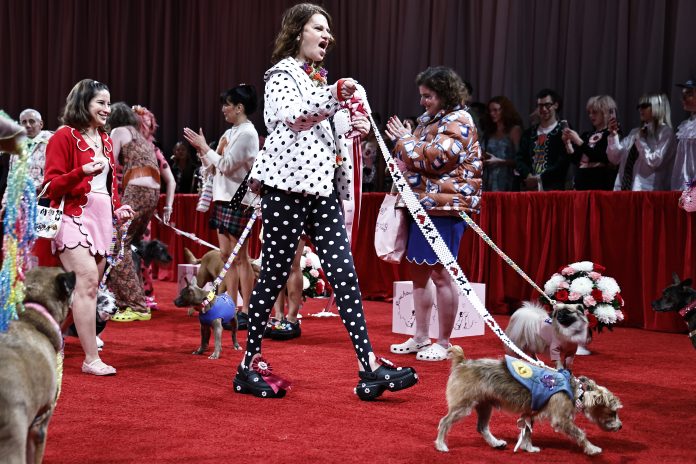New York Fashion Week (NYFW) has long been considered a global fashion hub, but recent challenges threaten its prominence, reports the New York Post.
A new report from the nonprofit Partnership for New York City, released just days before NYFW’s opening, highlights significant issues facing the city’s garment industry, including rising costs, a shrinking fashion sector, and declining enrollment in local design schools. Over the past decade, New York’s garment industry has shed more than 50,000 jobs—a 30% decrease—suggesting that “the Big Apple has lost a bit of its fashion luster.”

Industry Concerns:
Fashion insiders and industry veterans have expressed concerns about NYFW’s diminishing allure. While GQ went as far as to declare NYFW dead, others like Teen Vogue argue it’s merely experiencing a “vibe shift.” Kelly Cutrone, a legendary fashion publicist, likened the industry to a “wavy business” that moves in cycles, asserting that NYFW isn’t dying but evolving.
Eric Gertler, a media executive and former economic development official, underscored the importance of maintaining the fashion industry in New York, saying it’s “part of the fabric of the city” and contributes to its dynamism.
Challenges Highlighted in the Report:
- Rising Costs and Accessibility: Emerging designers face financial obstacles, with some paying up to $300,000 to participate in NYFW. The decentralized nature of the event, with shows scattered across the city, creates logistical challenges, especially for new designers who depend on the attendance of buyers, editors, and investors.
- Decline in Fashion Education: The number of students pursuing fashion degrees at top institutions like Parsons, Pratt, and FIT has dropped by nearly one-third since 2016, signaling a potential talent shortage in the coming years.
- Impact of Fast Fashion and E-commerce: The proliferation of fast fashion and online shopping has reduced the importance of traditional retail spaces in New York, further impacting the visibility of emerging designers.
- Shift in Audience Dynamics: The advent of social media and influencer culture has changed the face of NYFW. Shows are now often geared towards creating Instagram-worthy moments rather than impressing industry veterans like editors and reporters.

Efforts to Adapt:
Despite these challenges, NYFW remains a cultural cornerstone, with a packed schedule of shows and events. The Council of Fashion Designers of America (CFDA) has partnered with Rockefeller Center to stream 40 shows at 30 Rock’s skating rink, aiming to bring fashion closer to the public. This initiative, according to CFDA CEO Steven Kolb, is intended to give everyone a “front-row seat to the creativity and innovation of American fashion.”
However, the Partnership study suggests NYFW needs a complete overhaul, such as consolidating events at a single location and expanding accessibility, to maintain its status as a fashion capital.
Looking Ahead:
Despite the uncertainty, NYFW continues to attract big names and new talent. This season features iconic brands like Ralph Lauren, Tory Burch, and Tommy Hilfiger, alongside fresh faces like Off-White and Frolov, making their NYFW debut. For some, like Kyiv-based designer Ivan Frolov, presenting at NYFW offers a chance to connect his war-torn homeland with the global fashion community.
In a unique twist, socialite Anna Delvey, whose conditions under house arrest have recently loosened, will produce a three-show lineup in Chelsea. Despite not being the “most important fashion week in the world”—a title Cutrone reserves for Paris—NYFW’s energy and expressive spirit continue to ensure its place on the world stage.
As New York Fashion Week kicks off, the industry must navigate these evolving challenges while leveraging the city’s rich history and enduring creative spirit to remain relevant in the ever-changing fashion landscape.


